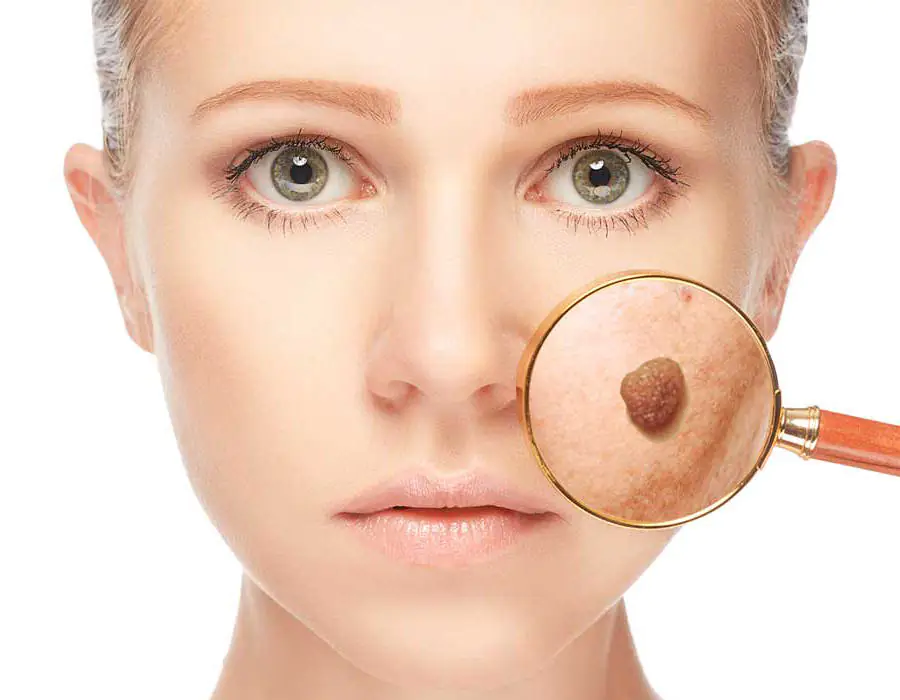
- 2016-08-18 00:00:00
Why remove moles?
7 clinics in Moscow since 1994 ☎ (495) 411-99-96, what you need to know about mole removal before choosing a clinic and other questions
If we pose the question more broadly, it may sound like this: why remove moles, warts, papillomas and other neoplasms? How much it's useful and safe?
When answering the questions posed, it is necessary to highlight two main aspects: medical and aesthetic.
Medical aspect of mole removal
Let's start with a discussion of medical indications for removing tumors on the skin. There are two main factors influencing decision-making from a medical point of view: to remove or not to remove?
Firstly, this discomfort caused by the tumor. Since we are talking about neoplasms on the surface of the skin, friction with clothes, shoes, etc. is possible. For example, plantar warts can cause pain when walking. Papillomas on the neck can rub against the collar of a shirt.

papilloma on the chest
It should be borne in mind that neoplasms tend to increase and grow. On the other hand, there is a possibility of damage to the tumor. In case of damage, there may be an infection or even a risk of transformation of a benign formation into a malignant one.
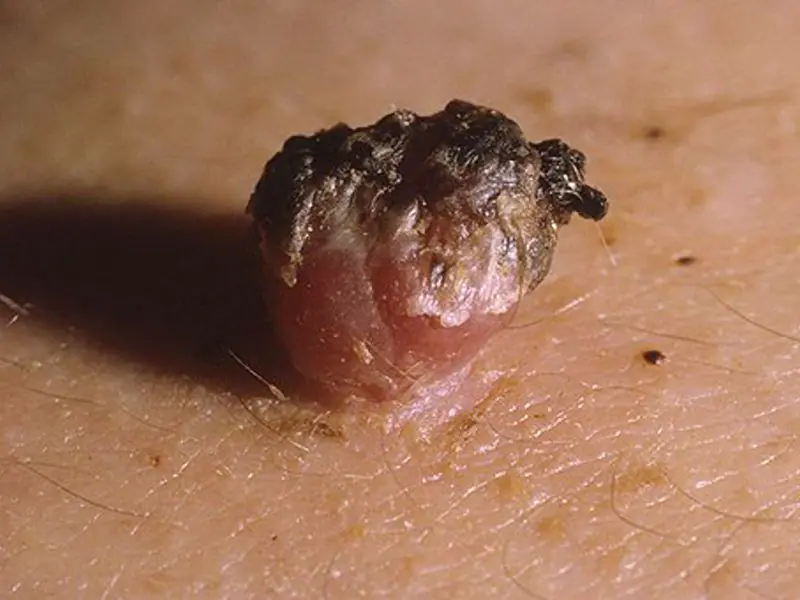
papilloma
The fact is that risk of transformation of a benign formation into a malignant one exists without damage to the tumor. Actually, this fact is another medical factor influencing the decision to remove a mole.
answers Titov Alexey Ivanovich, cosmetologist-surgeon with extensive experience, Ph.D.
20 years works in Rednor centers
Melanoma may pose a risk of developing skin cancer or melanoblastoma is a malignant tumor. It is characterized by all the signs of cancer: unlimited tumor growth, destruction of neighboring structures or organs, spread of cells through the blood or lymphatic system and the formation of new growth foci. If a mole suddenly changes its color, shape, or increases in size, then this is a cause for concern.
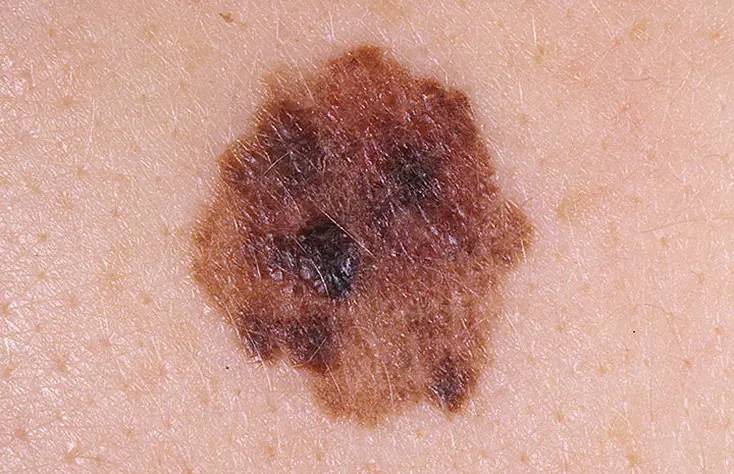
melanoma
The main difference between a malignant tumor on the skin and cancer of internal organs is that, as a rule, a biopsy is not performed to diagnose skin tumors. A biopsy is a method of extracting a portion of cells for histological examination. Since this procedure itself can provoke the spread of diseased cells, for example, through the blood, then after confirmation of malignancy, treatment is mandatory, including surgical excision of tissue. Since nowadays the removal of skin tumors has become much easier, especially with the help of a laser, a different procedure is recommended. If cancer is suspected, the tumor is removed, and some of the cells from the removed tumor are sent for examination.
Thus, high-quality and timely removal of a mole can prevent the development of cancer. Before removal of the tumor, a consultation is held, at which the doctor decides on the possibility of removal; if necessary, the patient is referred to an oncologist. If a malignant tumor is suspected, the material is sent for histological examination.
Most moles do not pose a threat to human life and health. Since histological examination is not included in the cost of removal and often exceeds the cost of removing the tumor, the doctor recommends that it be carried out only if there is reasonable suspicion. However, the patient has the right to conduct such a study in any case. The only limitation can be the size of the mole. If the mole is very small, for example, no more than 1 mm in diameter, then collecting material for examination may be difficult.
Aesthetic aspect of mole removal
Even if we do not take into account such an aspect as the professional activities of actors, politicians, TV presenters and other public people, the fact that “one meets people by their clothes” is undeniable.
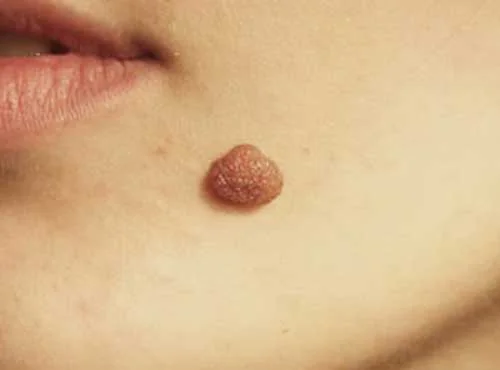
mole before removal
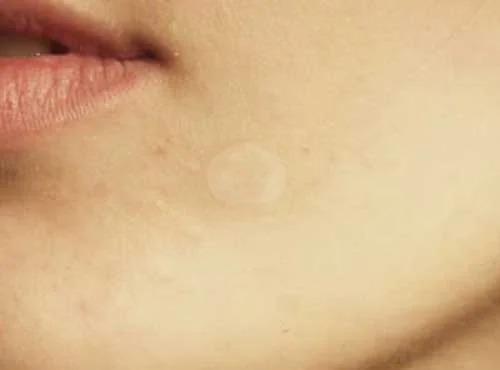
after mole removal
About how skin defects can affect the perception of a person by the people around him was very subtly noted by Mikhail Sholokhov in the novel “Quiet Don”:
Grigory glanced sideways at Natalya. And then for the first time I noticed that her upper lip was plump and hung over her lower visor. I also noticed that on my right cheek, below my cheekbone, there was a brown mole, and on the mole there were two golden hairs, and for some reason this made me feel dreary. I remembered Aksinya’s chiseled neck with curly fluffy curls of hair, and it felt as if they had poured prickly hay dust down the collar of his shirt onto his sweaty back. He shivered and looked with suppressed melancholy at the slurping, slurping, devouring people.
Mole removal with CO2 laser
Fortunately, modern medical technologies can practically work miracles.
Real photo of mole removal from a patient review of the Rednor Center
To enlarge, hover over the photo
See all reviews

before deletion
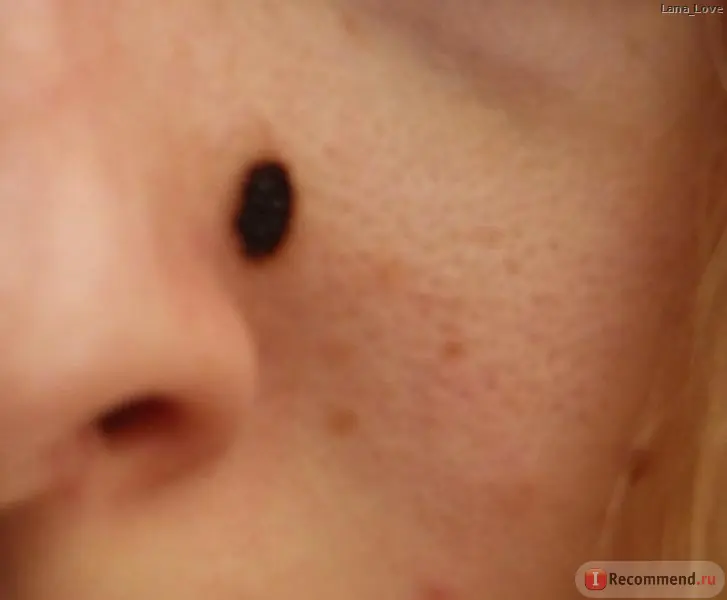
after removal
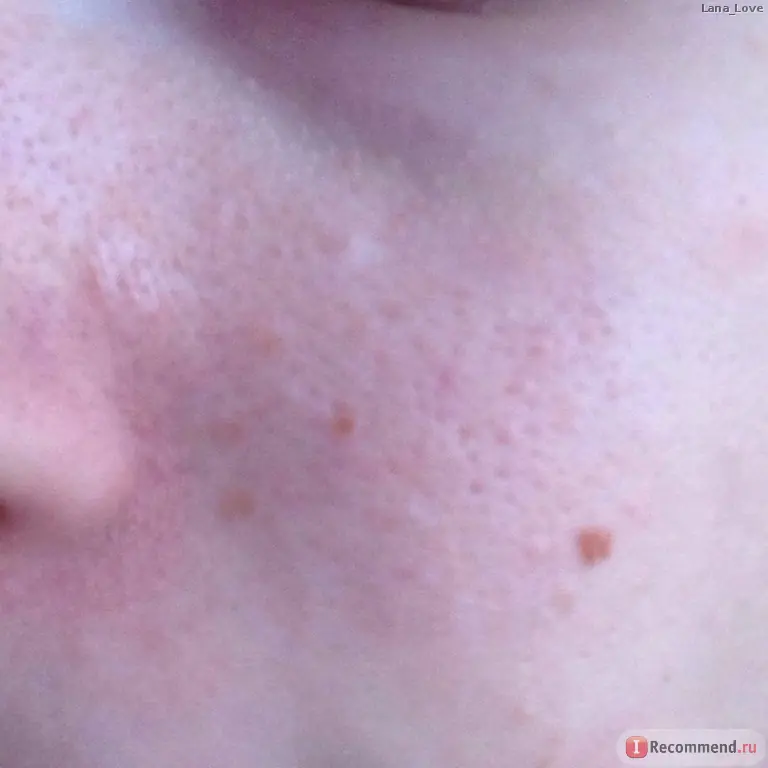
one year after removal
answers Markova Irina Vyacheslavovna, cosmetologist-surgeon
11 years operates in Rednor centres.
When removing moles and other tumors with a CO2 laser, there is no contact with the skin. Removal is carried out with a laser beam by gradual layer-by-layer evaporation of the affected tissue. Using a laser, removal is carried out with pinpoint precision, as close as possible to the edge of a mole or other neoplasm. It is possible to form a wound of a regular round shape with smooth edges.

mole before and after removal

wound healing after mole removal
The process of coagulation of tissues and blood vessels is of great importance for the result of removal. The high temperature of the laser beam essentially seals the blood vessels and forms a thin layer over the wound, which protects the wound from infection and subsequently turns into a crust. As a result, the removal process is bloodless, healing is faster, there is no scar at the site of the removed mole, and there is a flat, smooth surface.
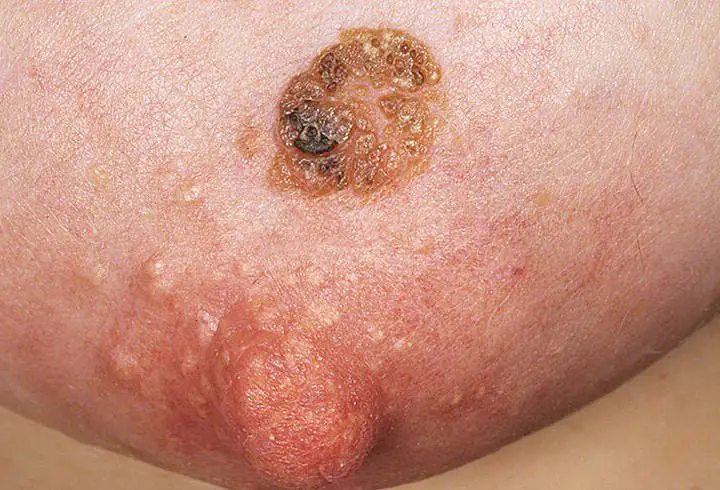
keratoma on the chest before removal
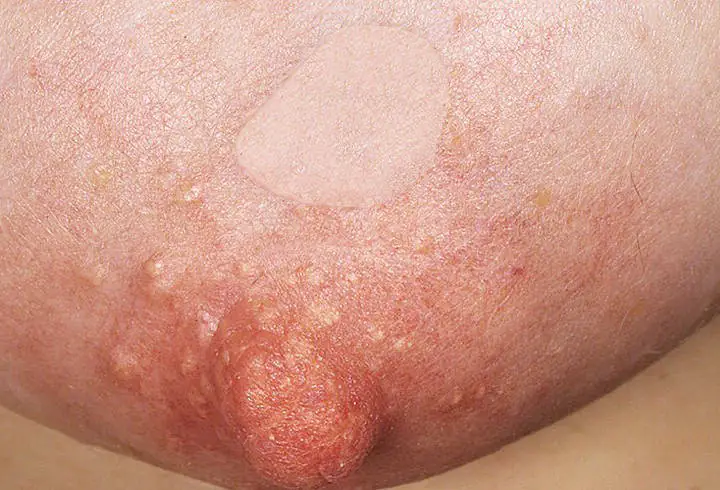
after removal of a keratoma on the chest
Why are moles removed?
Moles are the most common growths on the body. It is almost impossible to find a person in the world without them. They can appear and disappear throughout life. It is known that several factors contribute to their rapid emergence:
- pregnancy;
- hormonal changes;
- puberty;
- menopause period;
- long exposure to direct sunlight.
In most cases, moles are removed for two reasons:
- unaesthetic or inconvenient location. When nevi occur in places of frequent friction and are easily damaged or torn off, and also if, in the patient’s opinion, they are unsightly located on the face or body.
- degeneration into a malignant tumor. With injuries, serious illnesses, or prolonged exposure to the sun, some moles can develop into skin cancer - melanoma.
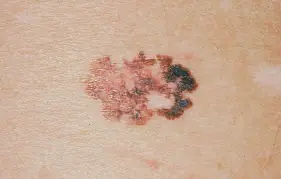
The first signs of such degeneration are:
- rapid increase in size;
- redness;
- change in color of the tumor;
- itching and peeling;
- bloody discharge from a mole.
If these signs occur, you should immediately consult a doctor. Let's say more, if you want to remove a mole of any size and for any reason, you first need to contact a specialist.
It is worth going to an oncologist for your first consultation. The doctor must examine the mole, find out your complaints or the reason for removal. If a mole is suspicious, it will be necessary to undergo a biopsy and undergo RTM diagnostics. These analyzes will allow you to accurately determine possible deviations. Based on their results, the oncologist can give a referral for removal. If the mole is not dangerous and you want to get rid of it for aesthetic reasons, then you also need to get a referral from an oncologist.
With the test results and a doctor’s referral, you then need to contact a dermatologist, cosmetologist or surgeon who will perform the procedure for excision of the nevus.

Today there is a large selection of clinics and aesthetic centers where any tumor can be removed. Before choosing one place or another, it is important to remember that the procedure must be carried out under the supervision of a doctor under sterile conditions. Under no circumstances should you go to beauty salons or people who perform procedures at home. This can be dangerous, since improper excision or infection in the wound leads to serious consequences.
In most cases, doctors themselves recommend the removal method that is best suited for the growth. Based on its size, location, type and category of complexity, the doctor may suggest the following methods:
-Surgical excision - this method has been used for many decades. The doctor administers local anesthesia and uses a scalpel to remove the tumor and a small area of skin around it. Then stitches and a bandage are applied. The stitches can be removed in a week, but the scar from the wound may remain forever, especially if the mole was large. Today, this method is used extremely rarely; it can only be found in regional clinics or hospitals.
— Laser therapy - thanks to the development of modern technologies, scientists have discovered the possibilities of laser and its use in medicine. The laser beam evaporates the tumor tissue layer by layer, and the removal is carried out very accurately. The surrounding tissues are not affected or injured. This method is perfect for tumors of any size, type and location. One of the important advantages is that it can be used on mucous membranes and in hard-to-reach places. The procedure takes place within 10-15 minutes, it is completely sterile and there is no risk of infection. After removal, the wound is covered with a brown crust, which disappears on its own within 7-10 days. What remains is pink skin, which gradually tightens and becomes comparable in color to healthy skin. In this case, no scars or scars remain on the body.
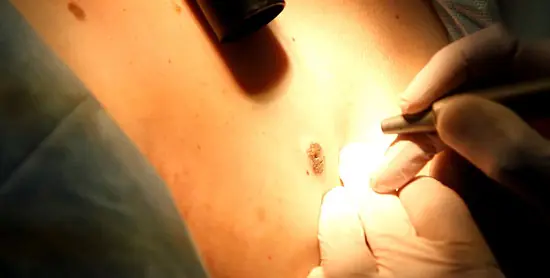
-Cryodestruction - this procedure is performed using liquid nitrogen, which cauterizes the formation cells. Exposure to low temperatures stops the vital processes in the cells and gradually the mole begins to fall off on its own. This method is used on small growths that do not rise above the skin. It is recommended on open areas of the body, since in hard-to-reach places and on mucous membranes it may not be effective and may cause tissue burns.
-Electrocoagulation - this procedure uses alternating or direct high-frequency electric current. With the help of high temperatures, the water contained in the cells of the neoplasm is affected. When it evaporates, a crust forms, which disappears on its own within a week. A white spot may form at the site of the wound, but over time it will acquire the natural color of the skin. This procedure is used for growths up to 1 cm, on open areas of the body: face, neck, décolleté, abdomen, legs, arms, back.
- Radio wave removal - a device with an electrode is used here that emits high-frequency radio waves. With their help, it is possible to cut off the growth at the very base. One of the main advantages of this method is its safety; during removal, the vessels are sealed and therefore there is no risk of infection. However, there are also disadvantages; in most cases, after removing large formations, a hole or small depression may remain on the body. Radio waves are also recommended for removing hanging moles and other growths that rise above the skin.
Removing a mole is a small operation, but still an operation. It is worth approaching it seriously and, of course, only under the supervision of a doctor.
It is worth understanding that moles are not always a harmless aesthetic problem.
When should a mole be removed?
The tendency for moles to become malignant can be determined by several signs:
increase in size (especially if it happened too quickly in a short period of time); an increase in the depth of penetration into the skin (only an experienced doctor can notice this); the appearance of bleeding (especially if the mole has not been injured in any way); division into several parts (or other change in shape or surface structure) presence of inconvenience (discomfort in contact with clothing, frequent brushing).In any case, you should first consult a dermatologist. Only he will be able to inspect and thoroughly examine the mole using a dermatoscope. Based on its results, he must determine whether surgical removal of moles is really necessary and which method is best to use for this.
But there are no strict contraindications to such an intervention, since mole removal is a cosmetic operation. However, doctors advise postponing removal during lactation or exacerbation of chronic diseases. Also, you should not perform surgery if there are inflammations or infections in the mole area.
Ways to remove moles
Depending on the method of exposure, there are various methods for removing moles and birthmarks. A paid surgeon in Moscow can do this using a laser, excision or liquid nitrogen.
Nowadays, most moles can and should be removed with a laser. This is the most painless method, but is slightly more expensive than other methods. The laser removes layers of formation until a micro-wound appears. But there are cases when the laser fails, then the surgical method remains.
Excision is considered the most inexpensive and proven option. Moreover, after the operation it remains possible to examine the material for malignant neoplasms. And excision also has the least chance of recurrence of a mole in the same place.
Cryodestruction is based on the effects of liquid nitrogen. Thanks to it, it is possible to deep freeze the skin formation. After treatment with cold at critical temperatures, the mole dies, and the mark from it quickly heals in the process of natural regeneration.



